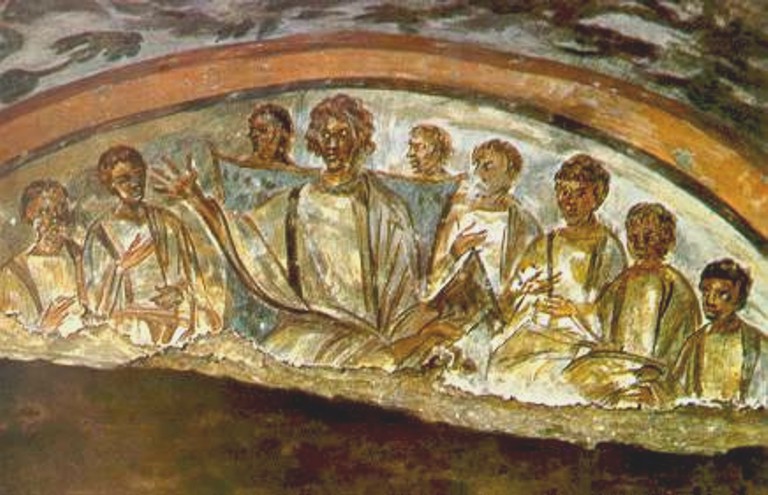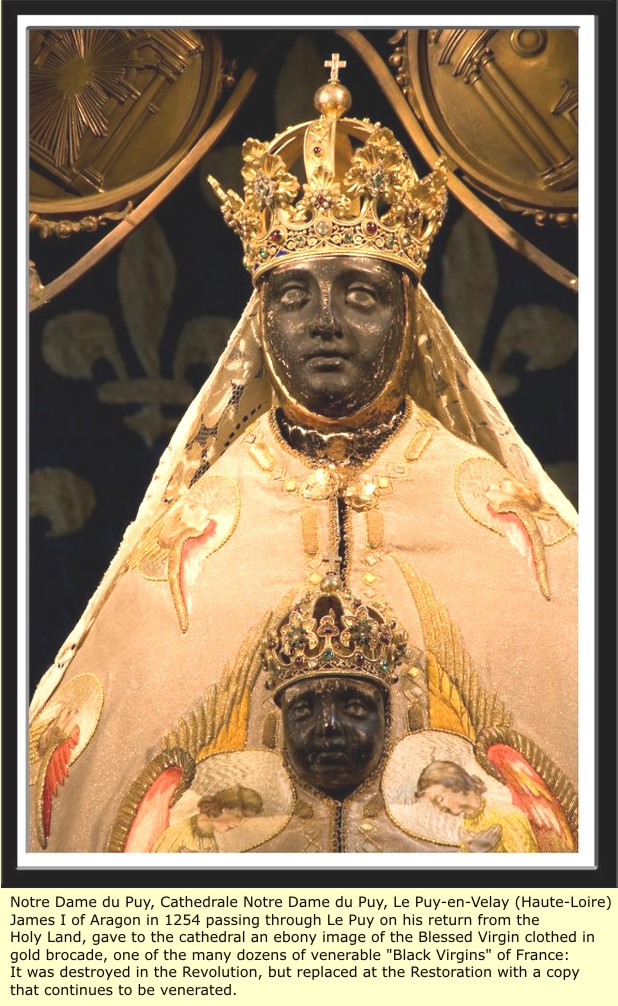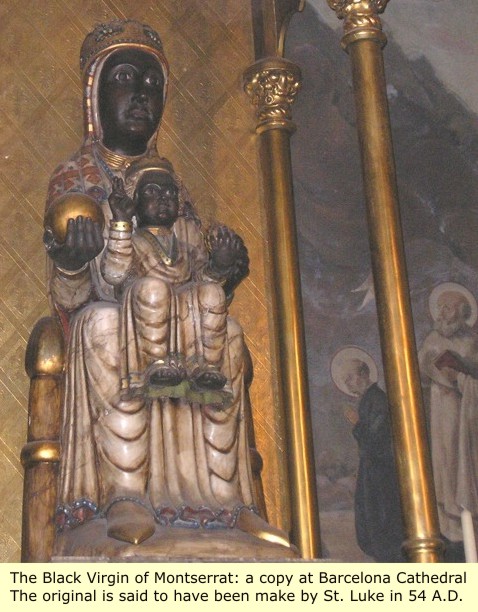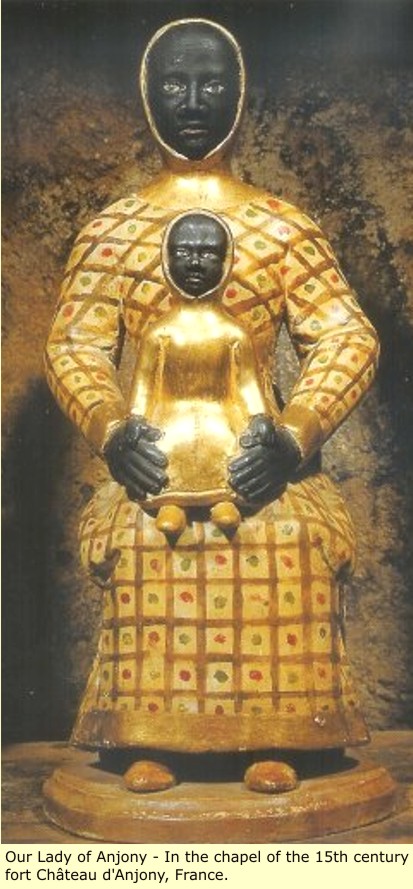
This wall painting, depicting the Healing of the Paralytic, is the earliest known representation of Jesus, dating from about 235 AD. The painting was found in 1921 on the left-hand wall of the baptismal chamber of the house-church at Dura-Europos on the Euphrates River in modern Syria. It is now part of the Dura Europos collection at the Yale University Gallery of Fine Arts.

This fresco of the Good Shepherd was found on the ceiling of the Vault of Lucina in the Catacomb of Callixtus in Rome. The construction of the vault itself has been dated to the second half of the 2nd century, but the use of the red and green lines to divide the space (similar to the chambers under San Sebastiano) has suggested the first half or middle of the 3rd century for this fresco.
The image of Jesus as the Good Shepherd was an especially popular motif in the early Christian centuries. It was based in several biblical passages, including the 23rd Psalm and sayings of Jesus, and is also an adaptation of a popular pagan image.

This fresco of Christ Among the Apostles is in an arcosolium of the Crypt of Ampliatus in the Catacombs of St. Domitilla in Rome. The Catacombs of Domitilla date from the 2nd through 4th centuries. According to W.F. Volbach, “The extent to which the type of the apostolic group as been developed suggests a 4th-century origin” for this particular fresco.




presented by Mike111


Was there an ethnicity war or similar documented disruption in the East between the 4th and 6th century. Are there any catacomb depictions, fresco paintings, or similar relics between 4th and 6th-century depicting ethnicity war, maybe relating to Greco-Roman or Syria area?
I am asking because I am trying to understand why artists began depicting Jesus as white or light-skinned between the 4th and 6th century in Syria, Greece, and Rome.